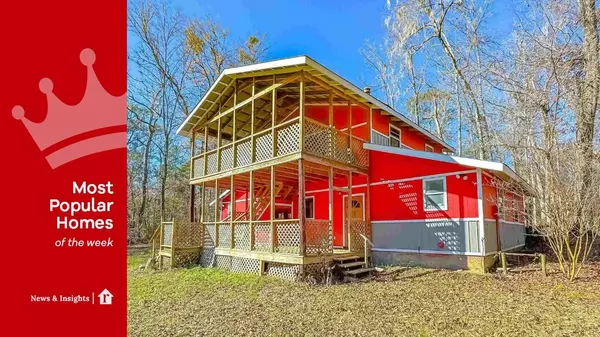Home Price Growth Slows Again as Mortgage Rates Weigh On the Market

Edwin Remsberg/Getty
Home price growth continues to slow in the U.S., as high mortgage rates and persistent affordability challenges weigh on the housing market.
Nationwide, home prices grew 3.6% in October from one year ago, down from 3.9% in September and the seventh straight month of declining annual gains, according to the latest S&P CoreLogic Case-Shiller Index data released on Tuesday.
The index’s composite of the 20 largest metro areas posted a year-over-year increase of 4.2%, down from a 4.6% increase the previous month. New York again reported the highest annual gain among the 20 cities, with a 7.3% increase in October, while Tampa recorded the smallest gain, at 0.4%.
Although price growth is slowing, the national index hit another all-time high in October, reflecting home prices that remain at their highest ever, after accounting for seasonal fluctuations.
“With the latest data covering the period prior to the election, our national index has shown continued improvement,” says Brian D. Luke, head of commodities, real and digital assets for S&P Dow Jones Indices. “Removing the political uncertainly risk has led to an equity market rally. It will be telling should the similar sentiment occur among homeowners.”
Home prices have continued to gain nationally despite challenges that have sent home sales near 30-year lows. As 2024 draws to a close, the country is on pace for its slowest year of existing-home sales since 1995.
Mortgage rates have remained a major speed bump for demand, after rates remained near 7% for much of the year. Overall affordability is also a persistent concern, with the typical home payment now eating up a bigger chunk of the median paycheck than in the past 40 years.
"Purchasing a home is especially difficult right now because of high mortgage rates. These high rates gum up the gears of the housing market, leading to fewer sales and more modest price appreciation like the Case-Shiller Index showed today," says Realtor.com® senior economist Joel Berner.
"For savvy and equity-rich buyers, though, this provides an opportunity to take advantage of relatively weak prices and an ever-growing set of options. Buyers without the ability to self-finance, especially first-time buyers who don’t already have equity in a home they could sell, will continue to struggle to find opportunities even as prices moderate," he adds.
New York again leads the nation in home price growth
New York City has led the nation in home price gains for the past six months. Prior to that, San Diego recorded the biggest year-over-year price gains for the preceding six months.
“New York once again reigns supreme as the fastest-growing housing market with annual returns over double the national average,” says Luke.
Following New York, Chicago and Las Vegas saw the biggest annual home price gains, with increases of 6.2% and 5.9%, respectively.
Monthly, prices grew 0.25% in New York from September, after seasonal adjustment. Boston and Washington, DC, saw the biggest monthly gains for October, each recording a 0.7% increase.
Accounting for seasonal variations, 18 of the 20 largest metro areas tracked by the index posted monthly price gains from September. Only Tampa, FL, and Cleveland saw prices fall monthly.
In general, many cities that saw the biggest price booms during the COVID-19 pandemic now have some of the slowest price growth, while areas that suffered pandemic-related population loss and price stagnation appear to be on the rebound.
"The annual returns continue to post positive inflation-adjusted returns but are falling well short of the annualized gains experienced this decade," says Luke. "Markets in Florida and Arizona are rising, but not keeping up with inflation, and are well off the over 10% gains annually from 2020 to present. This has allowed other markets to catch up."
Categories
Recent Posts










